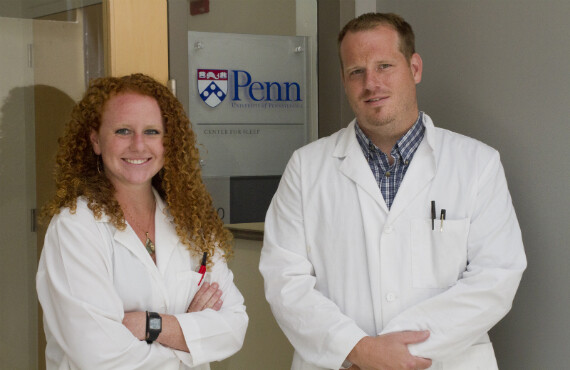Penn Student and Fellow Examine Intersection of Sleep and Alzheimer’s
Olivia Lenz graduated from the University of Pennsylvania in May, but she is sticking around to continue something she started as a sophomore: seeking answers to the subtle cycle of sleep.
Lenz works in the lab of Allan Pack, director of the Center for Sleep and Circadian Neurobiology. She explains that sleep is a natural state whose mechanisms and purposes are not fully understood, but one which may have implications for Alzheimer’s disease.
Lenz, a native of San Diego, has always been interested in circadian studies. As a University Scholar at Penn, she chose to major in biological basis of behavior. Lenz notes that the discipline was flexible, offering her the opportunity to concentrate on the relationship between brain and behavior.
“The study of the brain can be very quantitative, but it can also be measured in terms of behavior, or how organisms react to stimulants,” says Lenz.
She says that it’s important to understand that the brain is not an isolated organ; it controls behavior while environment influences its processes.
And Lenz is putting this perspective to the test in the Pack lab, where she studies the disruption of sleep patterns that occur due to Alzheimer’s disease. She does so by monitoring the sleep, circadian rhythms and protein measures of Drosophila, a genus of small flies.
“Before organisms develop the cognitive deficits triggered by Alzheimer’s disease, like memory lapses and general dysfunction, they often experience fragmented sleep,” Lenz says.
She hopes to understand the reasons behind the sleep disturbance and the extent to which it contributes to cognitive failings.
Lenz works with Jason Gerstner, a postdoctoral fellow in the Pack lab who recently received a Sleep Research Society Abstract Excellence Award for his work. He explains that the study of this potentially causal link is a recent addition to sleep research.
“Whether sleep disturbance actually exacerbates the pathology of Alzheimer’s disease is a new question in our field,” Gerstner says.
Integral to this part-behavioral research are two molecules, amyloid-beta and fatty acid binding proteins.
The first protein, Lenz says, aggregates to form plaques in the brains of Alzheimer’s patients. Amyloid-beta is an established part of the disease and has been shown to contribute to neurodegeneration and cognitive dysfunction.
The fatty acid binding protein, or Fabp, is more convoluted, Lenz says. She explains that it’s a chaperone protein and is involved in metabolism and various other processes, including that of sleep.
Since Fabp and Alzheimer’s are both related to sleep, and amyloid-beta is related to Alzheimer’s, the Pack lab researchers are looking for the link between the three.
“We want to determine if amyloid beta-induced sleep disruption is reduced by the fatty acid binding protein,” Gerstner says.
The two researchers reference a mouse-model study that found a diminution of Alzheimer’s symptoms with the introduction of a Fabp ligand.
“The brain-type Fabp binds an omega polyunsaturated fatty acid, DHA, to high affinity," Gerstner says, “and it’s been shown that when supplemented into a diet, it can help facilitate cognitive function.”
Lenz says that the data provided by this study is informing the direction of the Pack lab’s research.
“We will continue to investigate how Alzheimer’s affects the fatty acid binding protein, and how in turn the protein affects the pathology of Alzheimer’s,” she says.
The end goal of the research, she notes, is to reduce the effects of Alzheimer’s or prevent it entirely by catching the sleep disturbance pattern early on.
“We’re looking to generate novel therapeutic strategies and methods to delay progression of Alzheimer’s,” Gerstner says.
But even if a treatment is not found, Lenz says she and her fellow researchers will still have refined their understanding about the disease, both on a molecular and behavioral basis, which could influence future experiments.
“The most rewarding part of the research is producing novel data,” Lenz says. “We’re observing phenomenon that have never been observed before.”








